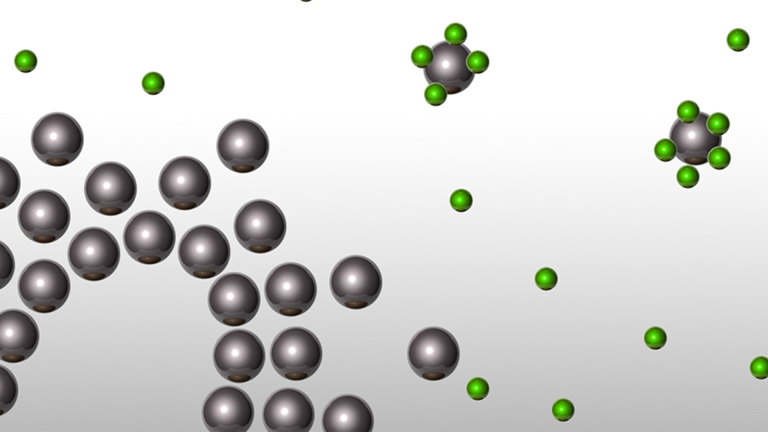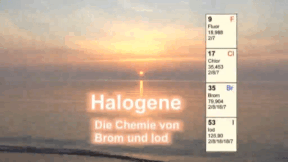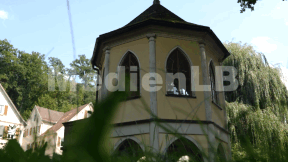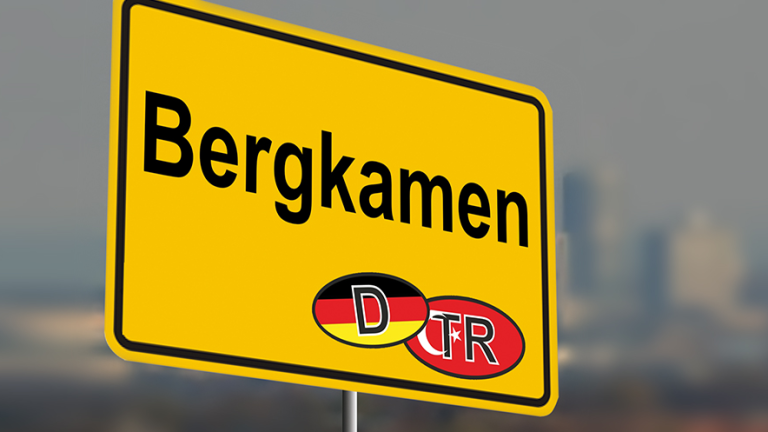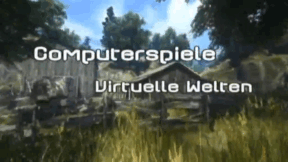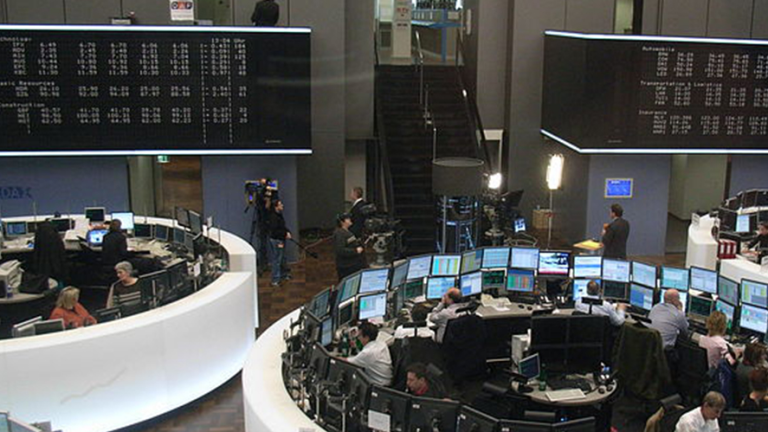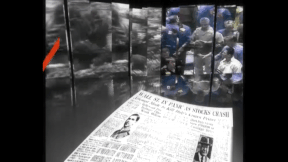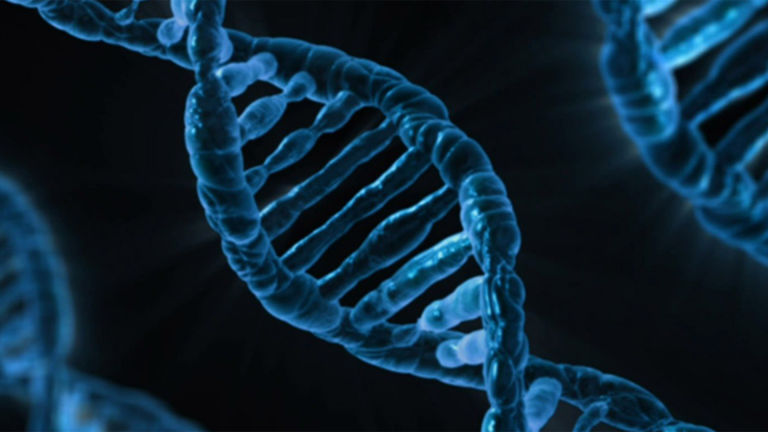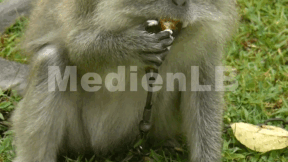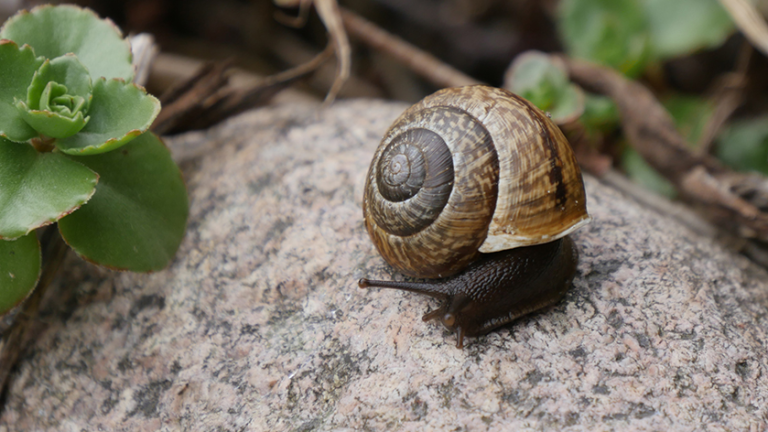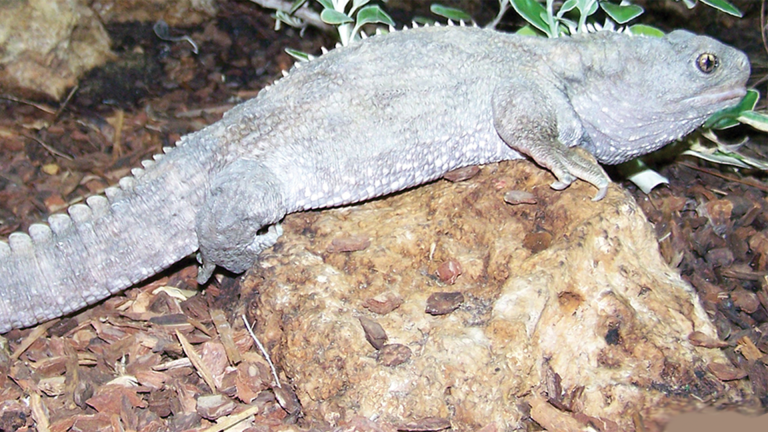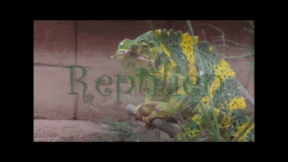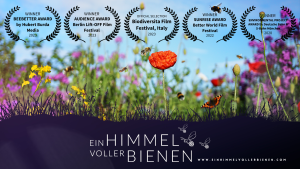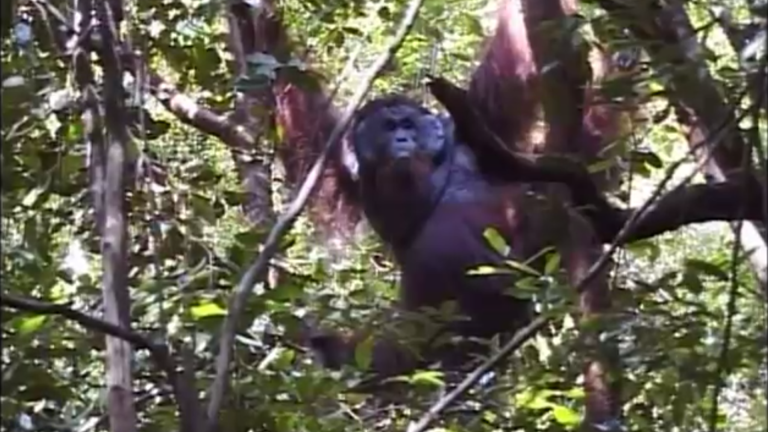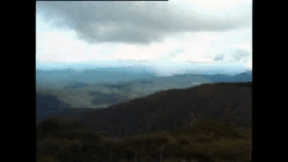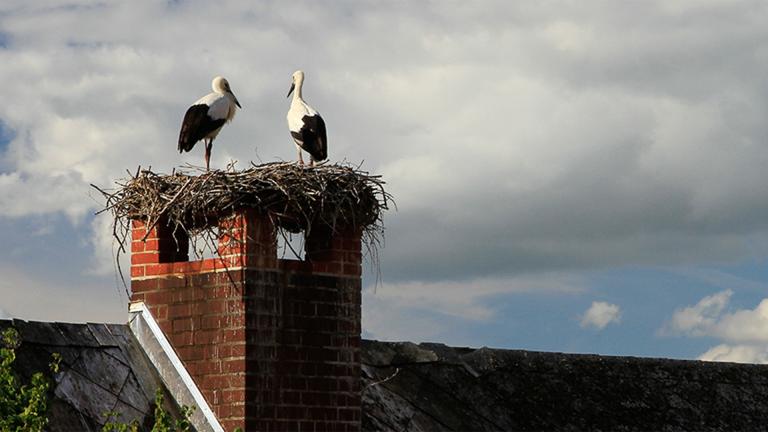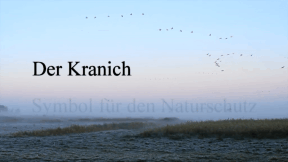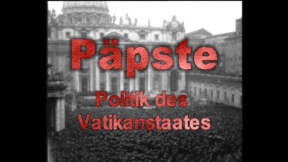Suche:
- # Artistry
- # Biology
- # Chemistry
- # Ecological
- # Economy
- # English
- # Foreign Language
- # Geography
- # German
- # Health
- # History
- # Informatik
- # Latin
- # Mathematics
- # Media Education
- # Music
- # Physics
- # Politics / Civics
- # Preschool
- # Primary School
- # Religion
- # Society
- # Sports
- # Technology
- # Training of Teachers
- # Vocational Education
Halogens
The compounds of halogens are - with the exception of astatine - widespread, can be encountered in nature and are versatile substances. This fact is taken up on this DVD in order to teach the students the chemistry of the halogens by illustrating their special qualities and explaining the correlation of their structure with their chemical properties. In the first part, an overview of the element group of halogens lays emphasis on the common as well as on the distinguishing characteristics of fluorine, chlorine, bromine and iodine. In a second part, the specific properties of bromine and iodine are presented. This topic is linked to the students‘ everyday experience on the one hand (bromine as a catalyst for reactolite sunglasses, iodine as an agent in medicine, etc.) on the one hand. As a rule, they are of a kind that can only be realized with difficulty, or high expenditure in the chemistry classroom. With the help of these experiments, students are introduced to the chemistry of the halogens in a way that enables them to draw conclusions on the basis of their observations.
Learn moreHermann Hesse
Hermann Hesse, (1877 -1962) war ein deutsch-schweizerischer Schriftsteller, Dichter und Maler. Er war Zeit seines Lebens ein Suchender. Nicht nur sein großes dichterisches Werk, das ihm 1946 den Nobelpreis einbrachte, auch sein Lebenslauf legt Zeugnis davon ab.
Learn moreBlogging
The weblog or blog, for short, as a medium is not much older than this century. Blogs came into being in the World Wide Web as ’messages from below’, as web pages from web creators who wanted to share their view of the world with the world. They are short notes, long texts, pictures, videos, which are posted loosely and at random intervals to the world for an undefined public.
Learn moreSoziale Brennpunkte
Barbara und Sükran haben so manche Dinge gemeinsam: Sie sind etwa gleich alt, haben beide Kinder – und sie wohnen in demselben Haus in Bergkamen – einer Stadt in Nordrhein-Westfalen, in die aufgrund ihrer Bergbauvergangenheit nach dem Zweiten Weltkrieg viele Gastarbeiter aus der Türkei gekommen sind.
Learn moreComputer Games
This film covers the topic of computer games in a variety of ways and from many different angles. Apart from the fascina- tion of computer games for users, the historical development as well as the production of computer games are described. The established genres are introduced, the guidelines of the German BPjM are explained. In light of recent public discussions, a neutral overview of the pros and cons of playing computer games is given, and different kinds of player behaviour are outlined. In this film, the pupils will recognise many aspects of their favourite pastime that encourage an independent, constructive use of this medium and reinforce their media competency. The film and teaching material are very closely related to the real-life situation.
Learn moreStock Market Crash
The America of the 1920s. The America where the gangsters rule the cities.
Learn moreGenetic Code Sun
Life on Earth assumes a large variety of shapes. There is plant life and animal life. Protozoa live alongside human beings, ants alongside fish and elephants, a blowball alongside a cactus.
Learn moreSnails and Their Habitats
They are slow, really slow ... they are soft, they are slimy ...and greedy.
Learn moreReptiles
This DVD offers a clearly structured overview over reptiles with an emphasis on the following aspects: The origin of reptiles is proven by fossil finds from all over the world. The skeletons are proof that reptiles were not confined to life on land but were also adapted to water and the air. The typical common characteristics of reptiles, such as the coat of scales and a poikilothermic body temperature, as well as the extremely different appearances of poisonous snakes and constrictors, turtles, lizards and crocodiles are discussed in detail. The different methods of finding food both as a herbivore or as an ambush predator with the use of poison or with the help of a pit organ are shown. The “invention” of the amnion made the reptiles’ reproduction independent from water and enab- led them to lay their eggs on land.
Learn moreEndangered Rainforest
The small proportion of about 7% of the entire surface of the earth covered by rainforest is of global significance from various perspectives. The survival of tropical rainforests has been on the agenda of all conservationist organisations for decades. But in spite of all their endeavours and the many political promises made, more hectares of rainforest are destroyed every day than ever before.
Learn moreCranes
They are counted among the most elegant and distinctive domestic birds. Due to their size, cranes can hardly be overlooked. Their call can be heard for miles. And: You hear them more and more often.
Learn morePopes
1922, St.Peter’s Square in Rome, at the dawn of a new era. On 6th February 1922, Achille Ratti, Archbishop of Milan, is elected Pope Pius XI. He addresses the faithful that have gathered on the square that is still Italian back then.
Learn more



